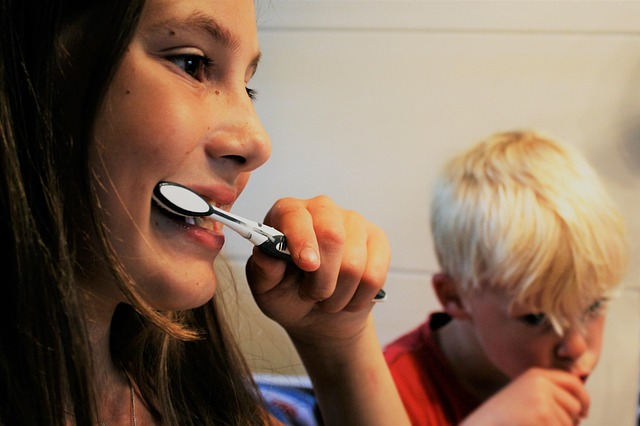Whitening approaches: chemical versus mechanical stain removal
Whitening approaches vary between chemical methods that alter stain chemistry and mechanical methods that physically abrade surface discoloration. This article explains how each approach works, the effects on enamel and sensitivity, and how everyday oralcare choices — from brushing technique to interdental cleaning — influence results and overall gumhealth.

Whitening methods for teeth generally fall into two broad categories: chemical agents that break down or lighten stains, and mechanical strategies that remove stains from the tooth surface using abrasives or polishing. Understanding the differences helps you balance whitening goals with cavityprevention, enamel protection, and breath management. This piece looks at how formulations interact with brushing habits, interdental cleaning, and long-term oralcare priorities.
This article is for informational purposes only and should not be considered medical advice. Please consult a qualified healthcare professional for personalized guidance and treatment.
How do chemical whiteners affect enamel and fluoride?
Chemical whitening commonly uses peroxide-based agents (like hydrogen peroxide or carbamide peroxide) that penetrate the enamel to break down colored molecules within stains. When used in appropriate concentrations and durations, these agents can lighten intrinsic and extrinsic discoloration without removing enamel structure. Fluoride is often included in daily toothpaste formulations for cavityprevention and to help remineralize enamel after exposure to acidic conditions; it does not itself whiten but supports enamel strength. Professional chemical whitening under dental supervision typically controls concentration and exposure time to minimize sensitivity and to protect enamel integrity.
Chemical approaches can increase transient sensitivity for some users because peroxide temporarily affects the tooth’s neural pathways or exposes dentin microtubules. Sensitivity is usually reversible and can be managed with lower-concentration products, desensitizing ingredients in toothpaste, or adjusting application frequency. Always consider product formulation and recommended usage when evaluating chemical whitening for long-term oralcare.
How do abrasives remove stains and affect sensitivity?
Mechanical removal relies on abrasives—silica, hydrated silica, calcium carbonate, or baking soda, among others—built into toothpaste formulations to polish and lift surface stains from enamel. Properly formulated abrasives remove extrinsic stains from coffee, tea, or smoking without altering tooth chemistry. However, overly abrasive products or aggressive brushing technique can wear enamel over time, increasing sensitivity and making teeth appear duller or more yellow as dentin shows through.
Abrasive action is most effective for surface stains and should be paired with gentle brushing technique and a soft-bristled brush. Checking the abrasive relative dentin abrasivity (RDA) is useful when available; lower-abrasivity options balance cleaning power and enamel safety. For those with existing sensitivity, choose milder abrasives and consider desensitizing formulations that contain potassium nitrate or stannous fluoride to mitigate discomfort.
How do brushing and interdental care control plaque and support whitening?
Consistent brushing removes plaque and surface films that attract and hold chromogens (stain-causing compounds). Twice-daily brushing with a fluoride-containing toothpaste supports cavityprevention while minimizing new stains. Interdental cleaning—flossing, interdental brushes, or water flossers—helps prevent plaque accumulation between teeth and along the gumline, areas where abrasives in a paste cannot reach.
Good technique matters: gentle circular or short back-and-forth strokes reduce enamel abrasion compared with hard scrubbing. Brushing immediately after consuming highly acidic foods can risk enamel wear; waiting 30–60 minutes allows saliva to buffer acids and for remineralization aided by fluoride.
How do formulation, breath, gumhealth, and cavityprevention relate to whitening?
Toothpaste formulation balances multiple priorities: whitening agents or abrasives, fluoride for cavityprevention, ingredients that support gumhealth (antimicrobials, stabilizers), and flavoring agents that freshen breath. A whitening-focused formulation may include polishing agents and mild chemical whiteners while retaining fluoride and pH stabilizers to protect enamel. Maintaining healthy gums is important for a uniform appearance; inflamed or receding gums can expose root surfaces that stain more easily and are sensitive to whitening agents.
When selecting products, consider whether breath control and gumhealth are primary goals alongside whitening. Some formulations emphasize breath freshness with antimicrobial agents that also support plaque control, while others prioritize gentle formulations for sensitive teeth.
How do natural ingredients and sustainability affect whitening choices?
Interest in natural or ‘‘clean’’ formulations has led to toothpaste options featuring baking soda, charcoal, or plant-derived enzymes as alternative whitening approaches. Baking soda provides mild abrasive action and a neutral pH that can reduce surface staining, while activated charcoal is a stronger abrasive and its efficacy and safety for long-term use are debated. Natural enzymes may target stain molecules chemically but tend to be milder than peroxide treatments.
Sustainability considerations influence packaging, ingredient sourcing, and formulation choices. Look for transparent labels about biodegradable ingredients, recyclable packaging, and responsibly sourced components. However, natural or sustainable branding does not automatically guarantee gentleness or effectiveness; evaluate ingredient lists and consult dental professionals for personalized recommendations.
Conclusion
Chemical and mechanical whitening each have defined roles: chemical agents penetrate and alter stain chemistry, while abrasives physically remove surface discoloration. Optimal oralcare often combines appropriate brushing technique, interdental cleaning, fluoride for enamel protection, and careful selection of formulations that balance whitening, sensitivity management, breath control, plaque reduction, and gumhealth. Discussing options with a dental professional helps tailor approaches to individual enamel condition, sensitivity concerns, and sustainability preferences.





